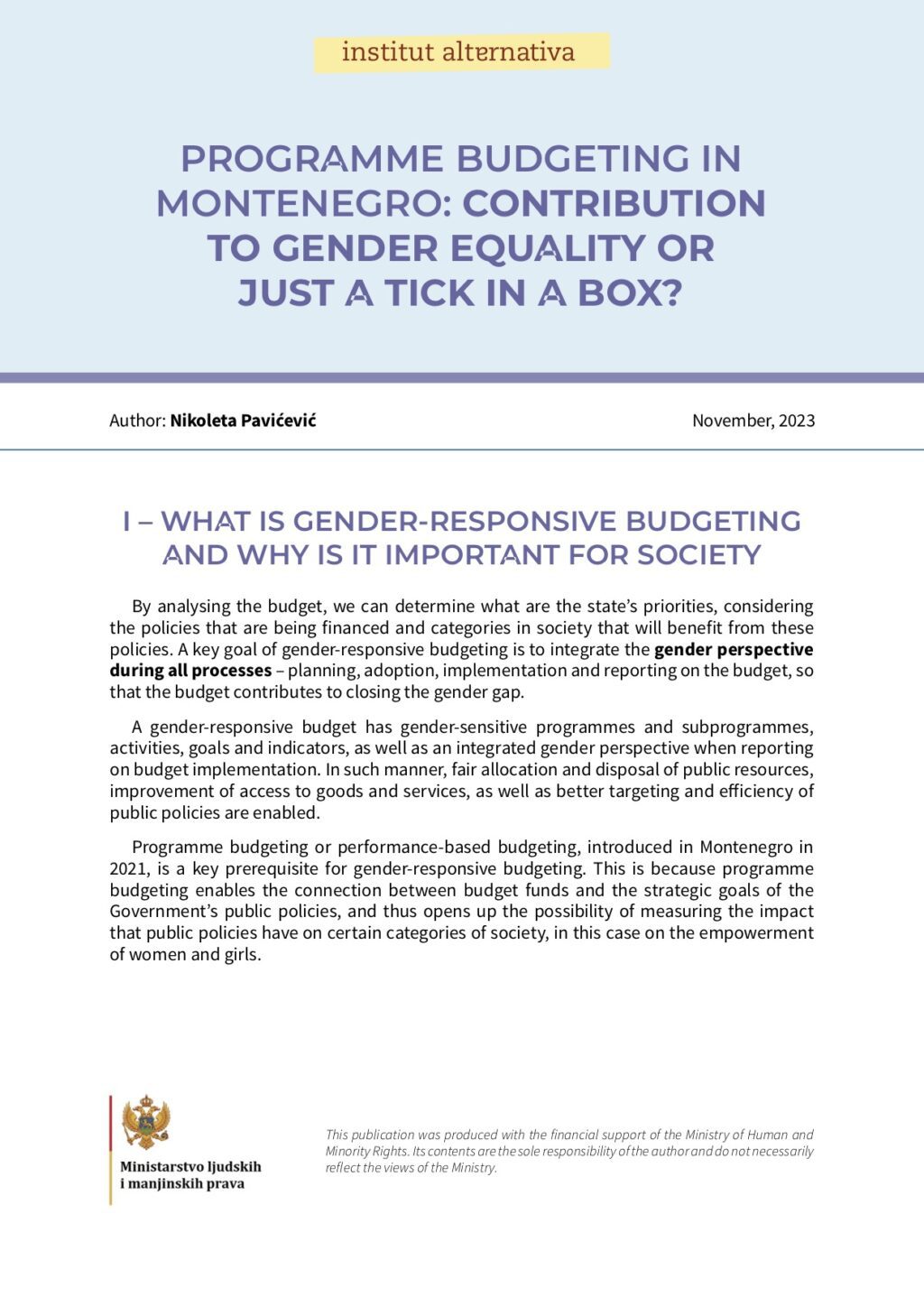Although programme budgeting should allow us to see who in society benefits from the budget, in practice in most cases this is not the case. When one digs deeper into the analysis of requests for budget funds and reports on budget execution, it is evident that programme budgeting is not sufficiently developed, especially in the part of gender-responsive budgeting. Spending units do not prepare semi-annual reports on budget execution in a timely manner, while there are frequent cases of requests and reports on budget execution that lack indicators or explanations for spent funds. When it comes to gender-responsive program budgeting in practice, the number of gender-responsive goals and indicators of programs, subprograms and activities of spending units is not satisfactory.
Numerous spending units improperly mark their goals as gender responsive, although they are not or are not accompanied by indicators that would translate the promise of reducing gender differences into budget funds. Thus, there can be a wrong picture of the situation and the data that says that a significant number of spending units have gender-sensitive budgets, and that no further improvement is needed in this area. The fact that in the analysed requests for budget funds, out of a total of 315 indicators, there are only 5 indicators that are gender responsive, or 1.5% of all indicators, speaks of the insufficient gender balance of the budget.

